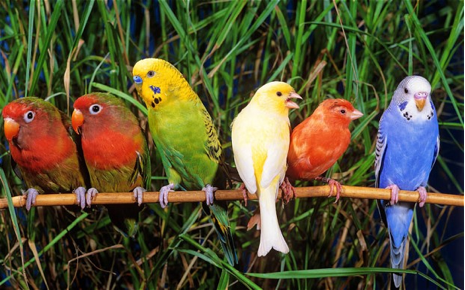Melodies of Singing Birds: Result of a Rare Evolutionary Event

A rare evolutionary event gave rise to a mysterious organ in some birds that conferred them with their ability to create harmonious tones. Syrinx – the voice box buried deep in their chests – is the organ that the singing birds get their singing abilities from.
Scientists have concluded that the syrinx has evolved only in the birds in an evolutionary process called the ‘evolutionary novelty’. No other organ in related animal groups among the vertebrates resembles the syrinx.
The paper published a few weeks back in Proceedings of the National Academy of Sciences of the United States of America (PNAS) has credited the evolutionary novelty for giving syrinx its uniqueness. Julia Clarke, the paleontologist at the University of Texas, USA, is the corresponding author of the paper.
Bird fossil that was 67 million years old revealed the syrinx for the first time. Clarke and her team dived deep into the origin of this mysterious organ. The team gathered the information regarding the anatomy, genetics and development of bird syrinxes and the larynxes from many modern reptiles. They discovered that the vocal organs in birds and in reptiles differ largely.
Larynx is the vocal box present in reptiles, amphibians and mammals. Larynx in all these species lies at the top of the throat, the area that protects the airways. The larynx has vocal cords – the folded tissues that make vibrations enabling a species to produce sound. Talking capabilities of humans, grunting of the pigs, roaring of the lions etc. all are attributable to the functioning of the larynx and the vocal cords. Birds also have larynxes, but it is their syrinx that they use to sing. The syrinx is also positioned differently; it is located down the throat, at a position where the windpipe splits into the lungs.
Clarke and her team found that the functioning patterns of larynx and syrinx are also different. For the vocal cords to make sound, larynxes depend on the muscles that are attached to the cartilages of it. Cartilages are connecting tissues found in many parts of the body, especially in joints between bones. Cartilages are firm but much softer and flexible than the bones. The cartilages give flexibility to the joints. But, syrinxes in birds, for voice generation, depend upon muscles that extend from the back of the tongue to the bones that connect the arms to the body.
The cell types that these organs are made up of is also different, as revealed by Clarke and her team. Two types of cells make the larynx up – the mesodermal cells and the neural crest cells. Mesodermal cells are involved in muscles and facial bone tissues, while neural crest cells are found in nerve cells. But, the syrinx is made up of only mesodermal cells. This is an excellent example of evolution of new structures. This phenomenon further can give rise to new organs.
Going further, Clarke and her team came out with the hypothesis that the ancestors of modern birds also had larynx, and at some point, new organs evolved. The cartilages in the windpipe just above the lungs expanded to form the syrinx. Over millions of years, sound production was taken over by the syrinx, possibly because the syrinx was much better in producing varieties of sounds.
This process of emergence of the syrinx is a very good example of evolutionary novelty. Evolutionary novelties, in true sense, are rare events in the entire scale of evolution. Evolutionary novelties refer to the process where new traits or new structures can emerge without any clear connections to previous traits or structures.
Again, such new traits or structures can result in further evolutionary processes, like making the syrinx able to make more complex notes and greater singing ability. Again further, these variations in singing could lead to split of a bird into newer species.
Get the latest reports & analysis with people's perspective on Protests, movements & deep analytical videos, discussions of the current affairs in your Telegram app. Subscribe to NewsClick's Telegram channel & get Real-Time updates on stories, as they get published on our website.














